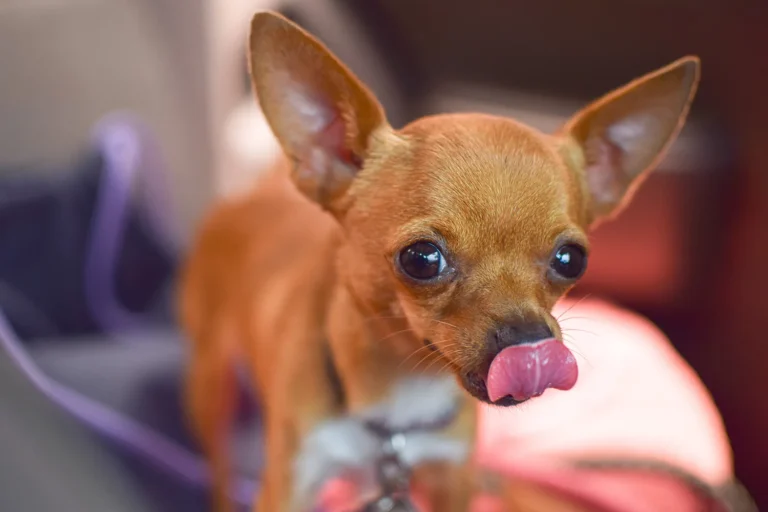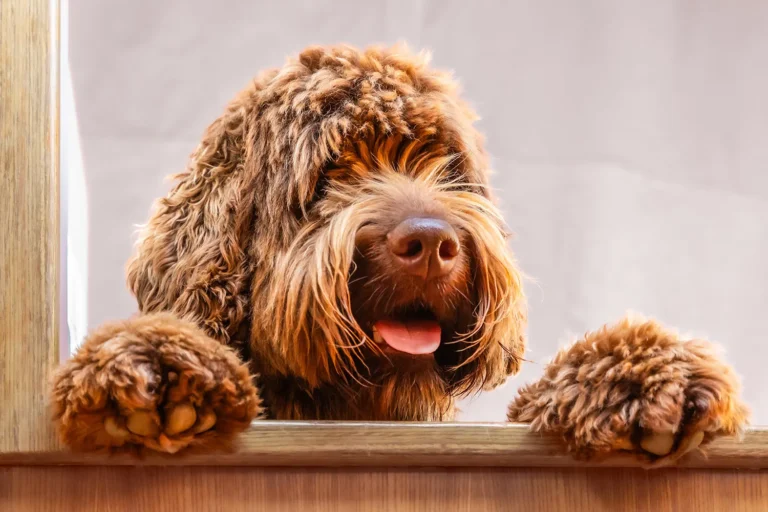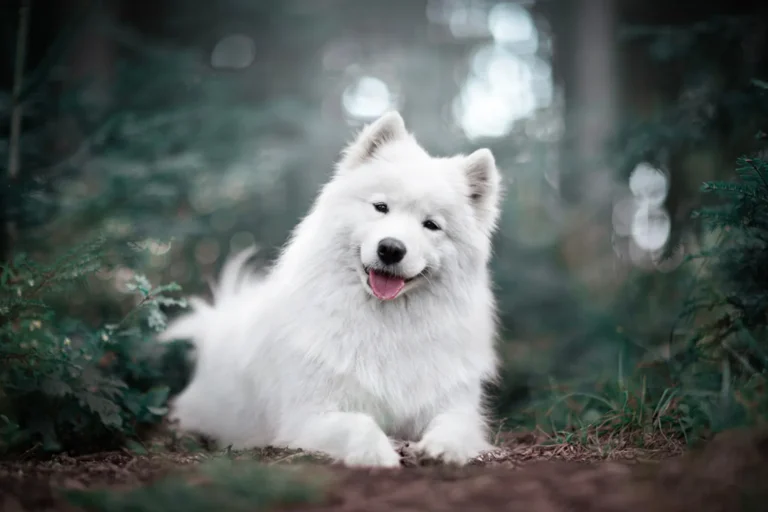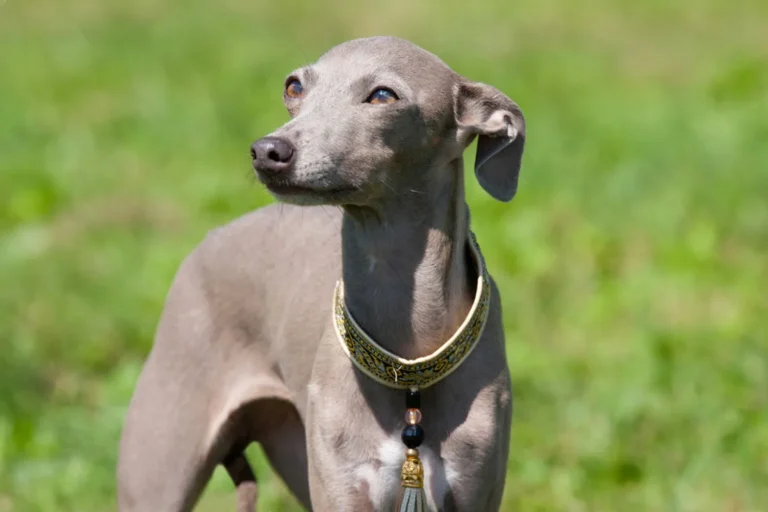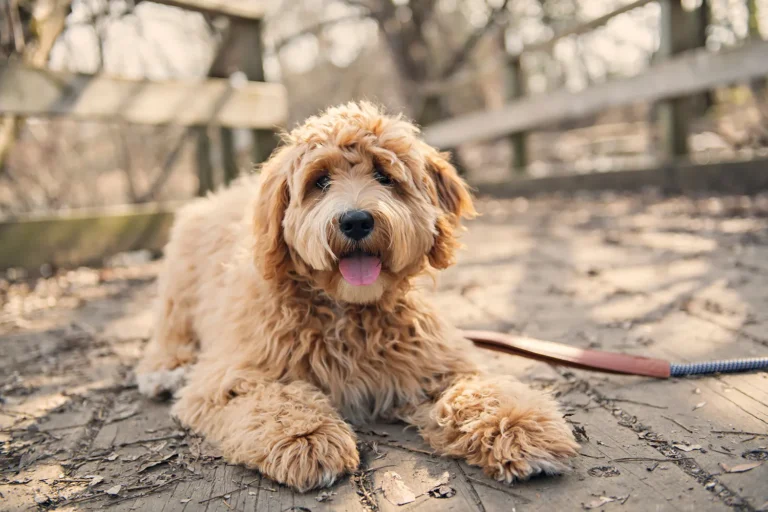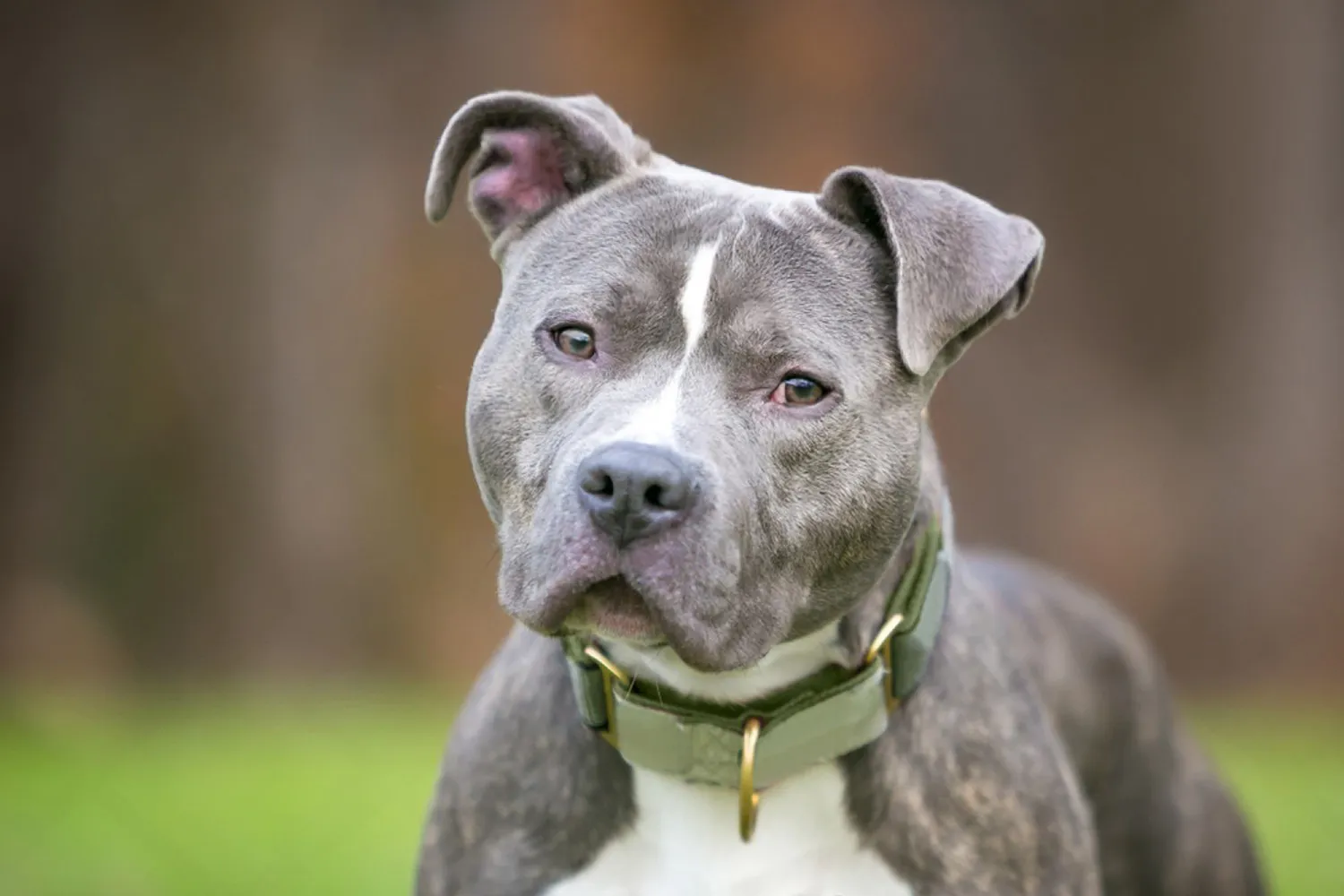
Originating from England, the Staffordshire Bull Terrier is a fairly new breed in comparison to some that have existed for centuries. While certain dogs trace their roots to ancient palaces and temples, the Staffy’s story really came together in more recent history, shaped in bustling English towns and working neighborhoods. I remember reading about them for the first time and thinking how quickly they went from local favorite to worldwide companion proof that a good heart and steady temperament don’t need a thousand year pedigree.
Because they’re a relatively modern breed, there’s a clear record of how they developed and what they’re meant to be: sturdy, people loving, and eager to be part of the family. The first Staffy I met at a park trotted up like we were old friends, all wiggly confidence and bright eyes. If you’re curious about the breed, chat with reputable breeders or meet a few at a rescue event to get a feel for their personality. And as with any dog, start socialization and training early you’ll see just how quickly a Staffy’s big heart and sharp mind make them a joy to live with.
What is the history and origin of the Staffordshire Bull Terrier?
The Staffy’s family tree starts with the old Bulldog, the same foundation shared by the American Staffordshire Terrier, the Bull Terrier, and the American Pit Bull Terrier. In 19th century England, those stocky Bulldogs were crossed with nimble local terriers to create a smaller, quicker, and very determined dog for the grim pastime of fighting. Picture the industrial Midlands coal dust, busy streets, and backroom pits where a tough little dog had to be fearless in the ring yet steady enough to be handled by people. I once popped into a pub in Staffordshire that still had a faded photo of miners with their compact, broad smiled dogs; even in that old snapshot, you could see the affection.
Here’s the twist that surprises a lot of folks: despite that rough start, Staffordshire Bull Terriers have long been famously people friendly. Handlers needed dogs they could trust, so steadiness around humans was prized. Over time, as dog fighting declined and fanciers stepped in, breeders focused hard on temperament channeling the Staffy’s grit into loyalty, playfulness, and a huge love of family. I’ve met plenty of Staffies who think they’re lapdogs; one foster I had, a red brindle named Alfie, would wind down from a game of tug by curling up like a cat and snoring on my knees.
By the time the American Kennel Club recognized the breed in 1974, the modern Staffy the cheerful, courageous companion we know today was well established. If you’re considering one, their history offers a little advice: give them a job to do, even if it’s just puzzle toys, training games, and brisk walks. They thrive on close contact and clear guidance, and they adore learning. A breeder I chatted with in the Midlands told me, “A tired Staffy is a happy Staffy,” and after watching Alfie solve a food puzzle in under a minute, I started rotating three different ones. It kept his brain busy, his heart full, and my shoes intact.
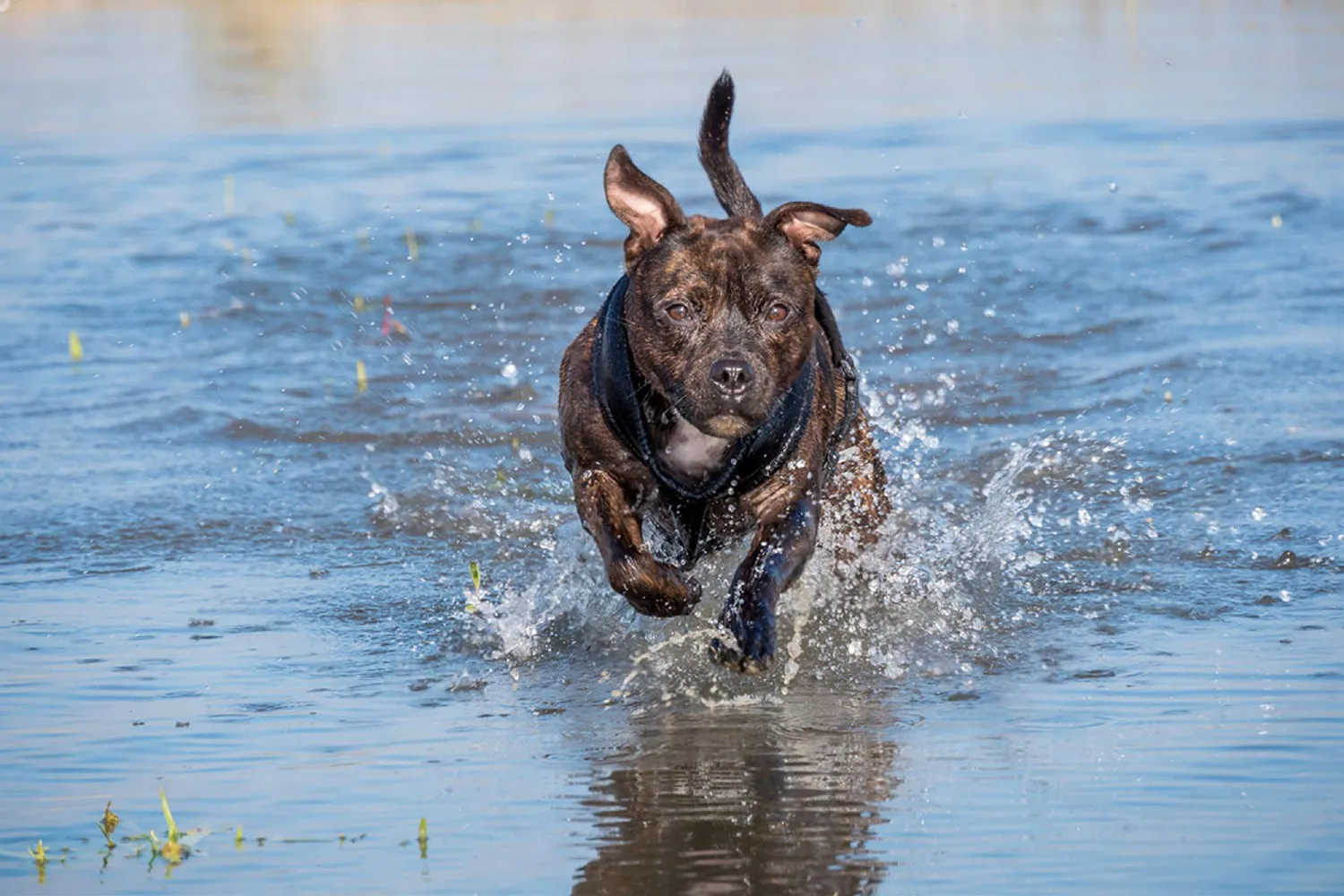
What Is a Staffordshire Bull Terrier?
Ask anyone who shares a home with a Staffy (or Stafford) and they’ll smile before they answer. This is a purebred, shorthaired, medium sized dog with a compact, muscular build and a surprisingly soft heart. They’re sturdy little athletes who look like they could bench press your coffee table, yet they’re just as happy curling up in your lap like they’re made of marshmallow.
Temperament is where Staffies really shine. They’re a wonderful mix of courage and affection bold enough to take on life with gusto, but devoted and people focused to their core. Yes, their history includes tougher chapters, but modern Staffords are known for being gentle, loyal, and downright cuddly when raised right. I remember meeting a Staffy at the park who strutted in like a tiny tank, then flopped onto my shoes for belly rubs within thirty seconds. That’s the breed in a nutshell.
They bond deeply with their families and love being part of the daily action. A bit protective by nature, they respond beautifully to early socialization and positive, consistent training. My tip: start young, keep sessions short and upbeat, and introduce them to all kinds of friendly faces and places. A front clip harness can help manage their enthusiastic pulling, and sturdy toys are a must these jaws mean business. Daily exercise, a couple of good play sessions (tug is usually a hit), and some brain games will keep that lively mind satisfied. Their short coat is easy to care for quick brush, regular nail trims, done but don’t skip the snuggles. In true Staffy fashion, they’ll happily trade a workout for a warm lap the minute you sit down.
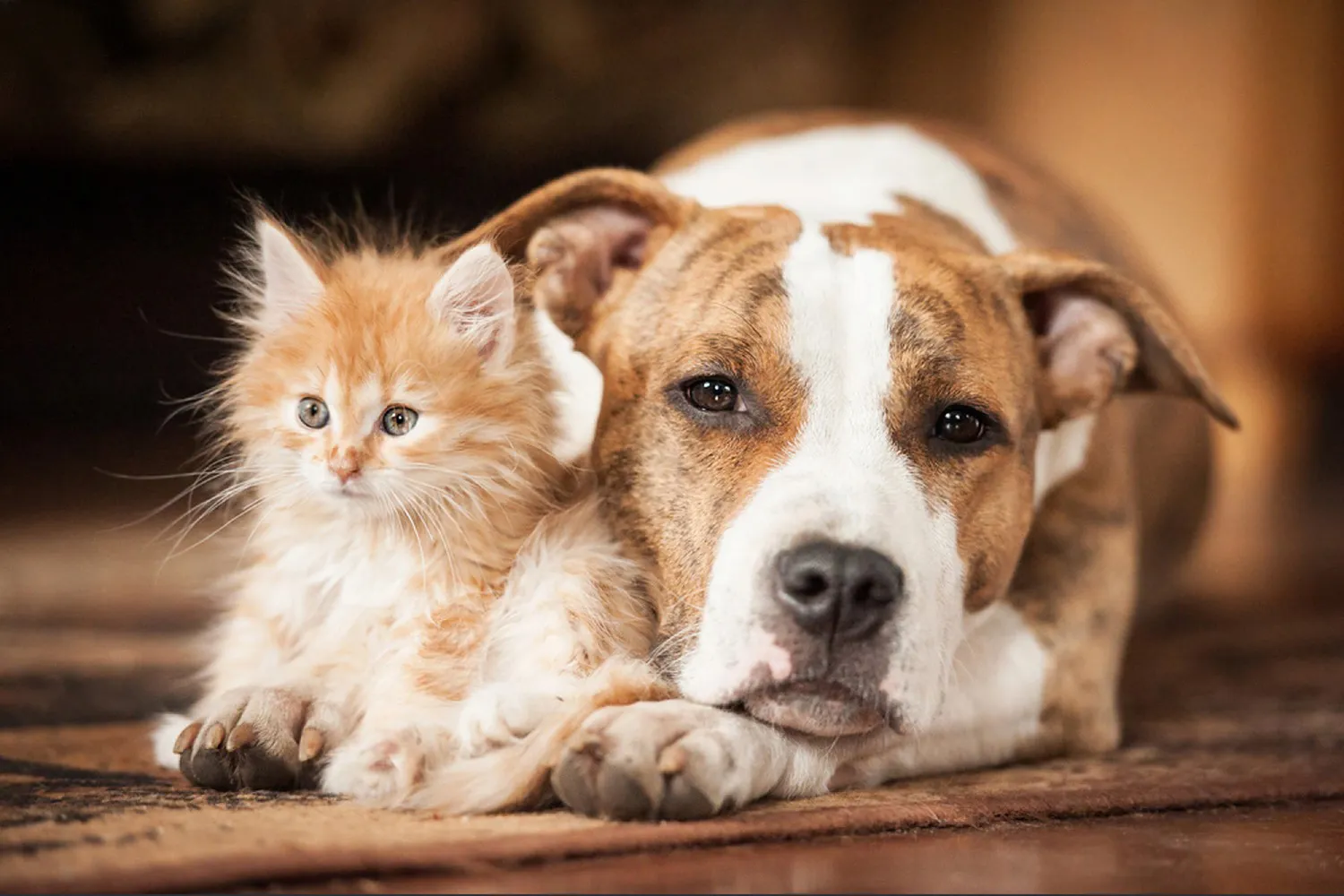
Who Is a Staffordshire Bull Terrier Best For?
A Staffordshire Bull Terrier thrives in a home where love and time are part of the daily routine. These dogs bond deeply with their people true shadow companions so they do best with folks who enjoy having a dog underfoot, on the couch, and, frankly, in your lap the minute you sit down. My neighbor’s Staffy, Mabel, would greet me with that helicopter tail and then tuck herself right against my leg like we’d been friends forever.
Because of their strong personalities and smarts, Staffies really benefit from early socialization and consistent, positive training. They’re especially well suited to experienced dog owners who can be calm, clear, and kind. If you’re newer to dogs but ready to learn, a good trainer and a solid routine can set you both up for success. I like to teach reliable cues early leave it, watch me, and a rock-solid recall and I always carry a pouch of treats to reward polite choices around new people and animals.
Their energy level is moderate: think two brisk walks a day, some tug or fetch, and a bit of brain work. Puzzle feeders and sturdy chew toys are your best friends; Staffies have powerful jaws and a love of chewing. I once fostered a Staffy who would happily zonk out after 15 minutes of sniffy walking and a frozen Kong. Apartment living is totally doable if you meet those exercise and enrichment needs. They’re not typically noisy, but they are talkers grunts, snorts, little woo woos that make you laugh.
Families with older, dog savvy kids often make a great match. Staffies are playful and sturdy, which is part of their charm, but that solid build can bowl over toddlers without meaning to. Supervise all interactions, teach kids how to give space and read dog body language, and set clear rules about toys and food.
Potential owners should be mindful of the breed’s protective instincts. Their loyalty can translate into wariness around unfamiliar dogs or people, so plan thoughtful introductions, use a secure leash and well fitted harness, and skip chaotic off leash dog parks. A fenced yard is nice, but not essential; what is essential is your presence. If you’re away long hours every day, this velcro dog may struggle. With time, structure, and affection, a Staffy will pay you back in spades with devotion, laughter, and some of the best couch cuddles you’ll ever have.
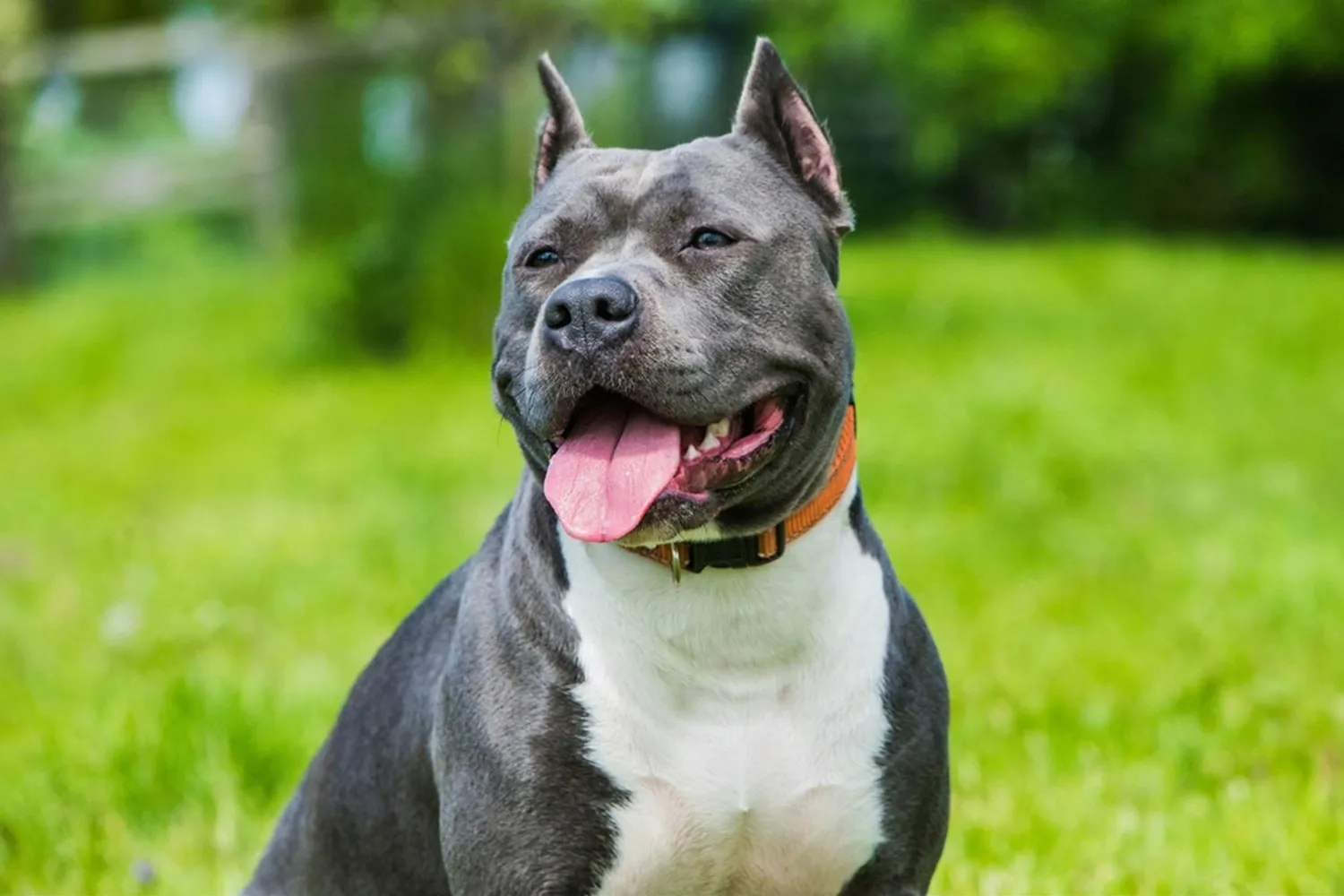
Staffordshire Bull Terrier Grooming & Shedding
Staffies wear a short, smooth coat that lies close to the skin think sleek and low maintenance, like a well fitted jacket. You’ll see them in classic colors such as black, white, blue, red, fawn, and brindle, sometimes with a dash of white here or there. Shedding is fairly minimal, so a quick weekly brush is usually all it takes to keep that coat shiny and the tumbleweeds off your floor. I keep a soft rubber curry brush by the door and give a fast once over after walks; it grabs loose hair and dust in about two minutes. A lint roller on the couch doesn’t hurt either.
Bathe as needed typically after a muddy adventure or when they pick up that mysterious “park perfume.” Use a gentle dog shampoo and avoid over bathing so their skin oils stay balanced. I towel dry thoroughly and do a little post bath zoomie management, then check the skin for any dry spots or nicks. Keeping a microfiber towel in the car has saved my seats more than once.
Beyond the coat, keep nails trimmed as needed; if you hear clicks on the kitchen floor, it’s time. I like a grinder for a smooth finish, but start slowly and pair it with treats so they learn it’s no big deal. Daily tooth brushing, if you can swing it, is gold flavored dog toothpaste makes it much easier, and dental chews can help between brushes. Peek into those ears weekly and wipe away any dirt with a vet approved cleaner. The real secret? Start all of this when they’re young. Handle paws, lift lips, gently touch ears, and keep sessions short and cheerful. My friend’s Staffy learned “paw” just so he’d get extra treats during nail time, and now he practically volunteers for his spa day.
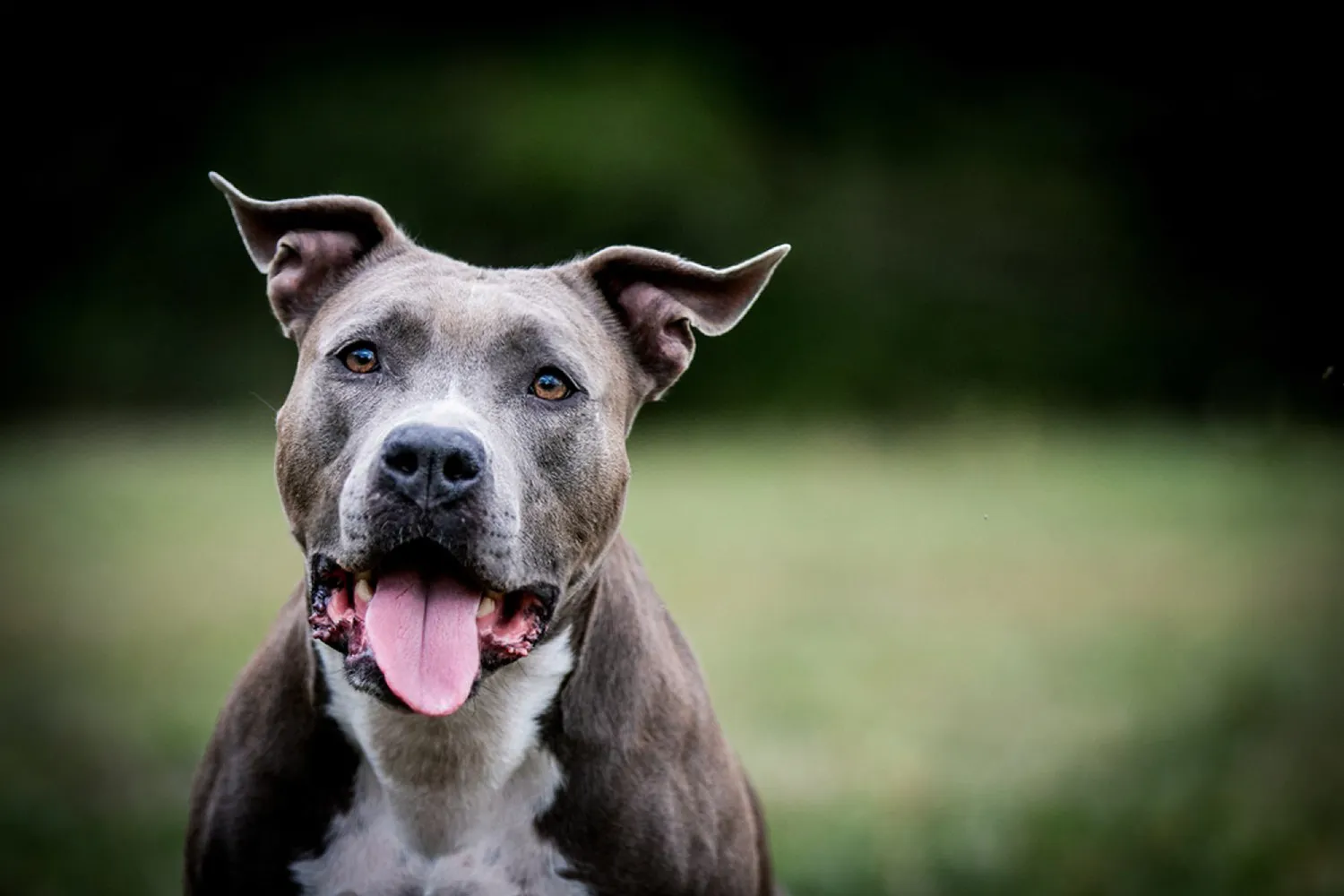
Do Staffordshire Bull Terriers bark a lot?
Not usually. Most Staffies aren’t big barkers, but they are champion “sound makers” in other ways. The first time I dog sat a Staffy, I thought there was a tiny piglet in my living room snorts, snuffles, little grunts, and then the bedtime snoring that could rattle a picture frame. They’re expressive dogs, and you’ll hear it in their huffs, sighs, and those funny groany “talks” when they’re trying to tell you something.
When a Staffy does bark, it’s often for a reason someone at the door, a burst of excitement during play, or a plea for attention if they’re bored. A good daily routine goes a long way: solid exercise, a few brain games (snuffle mats are a hit at my house), and clear training cues. I like to “thank” them for the alert “Good job, I’ve got it” then redirect to a sit or a toy. Teaching a quiet cue paired with rewards works wonders.
As for the soundtrack of Staffy life, embrace the snoring. If you’re a light sleeper, a comfy bed a little farther from your pillow or a white noise machine can keep the peace. My friend moved her Staffy’s bed from the bedside to the hallway, and both of them finally slept like rocks.
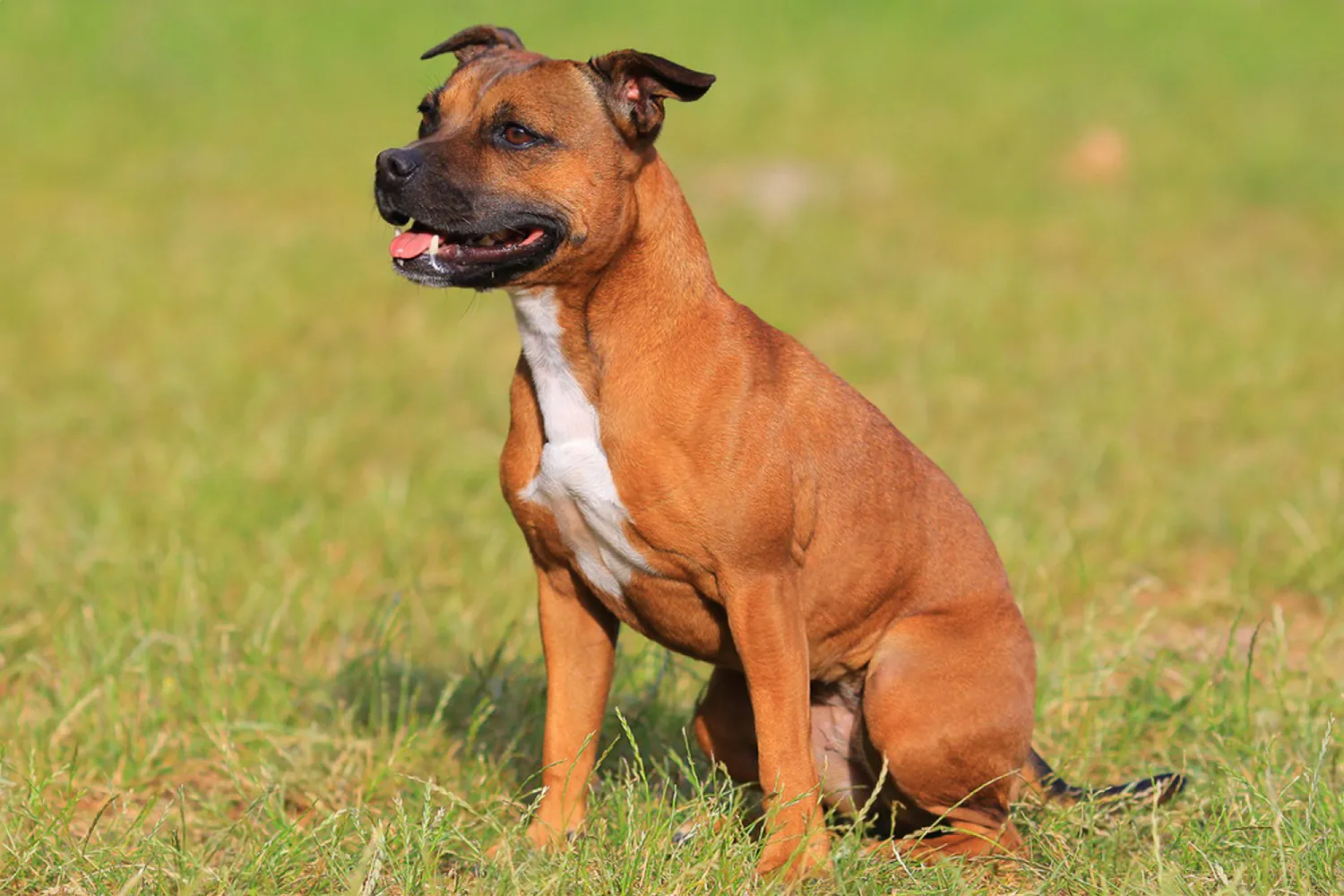
What Is the Average Weight & Height of a Staffordshire Bull Terrier?
Staffies are compact little powerhouses short, stocky, and surprisingly hefty for their size. For males, you’ll usually see a height of about 36 to 41 cm (14 to 16 inches) at the shoulder, with a weight around 13 to 17 kg (28 to 37 lbs). Females tend to be a touch smaller, typically 33 to 38 cm (13 to 15 inches) tall and about 11 to 15.4 kg (24 to 34 lbs).
One thing I always remind new Staffy owners: muscle weighs more than fluff. My friend’s male looked like a cuddly bowling ball compact and neat but he still tipped the scales at 16 kg and wasn’t the least bit overweight. When you measure height, stand your dog on level ground and measure to the withers (that’s the top of the shoulders). It’s more accurate than trying to chase a wiggly Staffy with a tape measure mid zoomie!
Don’t get too hung up on the number on the scale. Aim for a healthy shape: you should be able to feel the ribs with light pressure, see a waist when looking from above, and notice a gentle tuck of the belly from the side. Staffies carry a lot of muscle in their shoulders and chest, so two dogs of the same height can weigh quite differently. Puppies often reach close to adult height by around a year and then pack on muscle as they mature, so a little “filling out” is totally normal. If you’re ever unsure, a quick chat with your vet and a body condition check will tell you more than the scale alone.
https://en.wikipedia.org/wiki/Staffordshire_Bull_Terrier
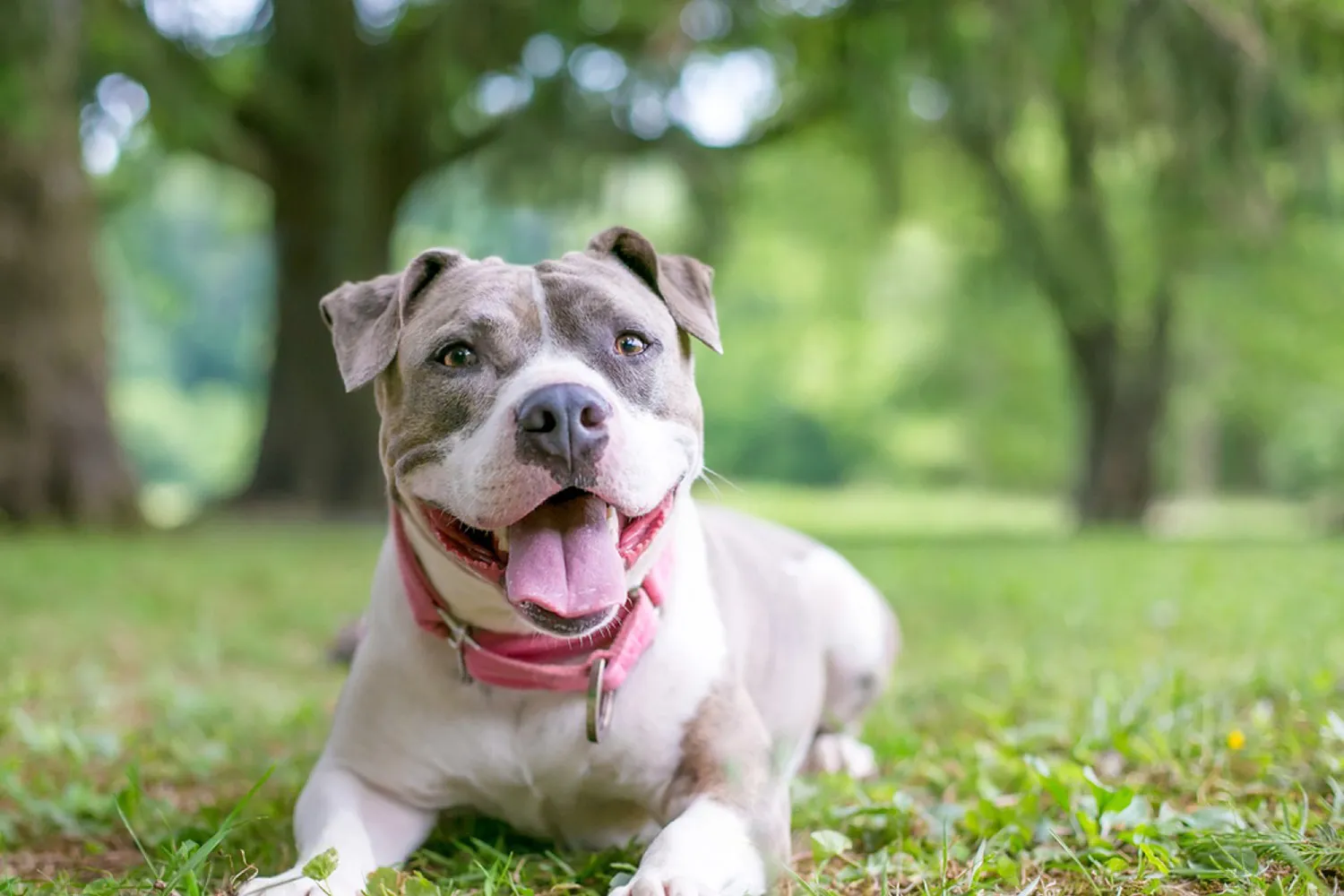
Are Staffordshire Bull Terriers Easy to Train?
Staffies are bright little firecrackers quick to learn and full of personality. Give them a clear cue, a tasty reward, and a bit of fun, and they’ll pick up new skills surprisingly fast. The catch? They’ve got a stubborn streak and a “what’s in it for me?” attitude. I remember teaching my friend’s Staffy, Daisy, to leave a dropped snack on cue; once she realized a better treat was coming, she acted like a tiny obedience champion. Keep sessions short and upbeat, use high value rewards (cheese, tug toys, praise), and be consistent with your cues. Start from day one with simple behaviors like sit, wait, and come, and weave training into everyday moments before meals, at doorways, on walks.
Firm doesn’t mean harsh. Think calm and confident: set a boundary, follow through, and reward the right choice. If your Staffy plants their feet or argues with the leash, reset the scene, move a step or two, and pay the moment they try. Games help a ton recall races in the hallway, “find it” scent games, and tug with a tidy “drop” rule burn energy and build focus. Early socialization and a good puppy class are worth their weight in gold, especially for impulse control around other dogs and people. And if you get stuck, don’t wait reach out to a positive reinforcement trainer who knows the breed. A little guidance can turn that stubborn spark into steady brilliance.

Inside the Staffordshire Bull Terrier Temperament
From the moment a Staffordshire Bull Terrier pup waddles into your life, you’ll notice two things: boundless energy and a determination to be part of absolutely everything you’re doing. I remember bringing a young Staffie to a family picnic once she rotated between supervising the grill, “helping” set out napkins, and trying to climb into every lap for a cuddle. They’re sturdy little shadows with a big sense of humor.
Temperament wise, think stubborn but curious, courageous and sometimes tough. That mix can look like a dog who will try, try again to figure out the baby gate, but who also bravely follows you down a noisy street without fuss. Training a Staffie is less about laying down the law and more about making cooperation feel like a fun game. Keep sessions short and upbeat, use treats and toys they adore, and you’ll see how quickly that stubborn streak turns into problem solving smarts. A friend’s Staffie wouldn’t sit for ages until we changed the reward to a squeaky ball. Suddenly “sit” was his favorite trick.
They’re famously devoted to their people protective in the sense that they want to be where the family is and make sure everyone’s okay. At the same time, they’re very tuned in to folks outside the home, which means they’ll absolutely want to greet your guests. I keep a jar of treats by the door and ask visitors to offer one when the dog sits. It turns that excited “there’s someone new!” moment into a calm, polite hello. Consistency matters: if one person lets them jump up, they’ll try it with everyone.
Early socialization is your secret sauce. Invite friends over regularly, including people in hats, hoodies, or carrying umbrellas things puppies find intriguing. Take short field trips to dog friendly areas like busy parks or café patios where they can watch the world go by. I like to do a “two treats, two steps” routine: treat for checking in with me, then step closer to the action, then treat again for staying calm. With other dogs, go slow and keep introductions neutral and positive; not every Staffie wants a rough and tumble play style, and that’s okay.
Give their eager brains a job: puzzle feeders, tug with rules, scent games in the living room. A good chew after a brisk walk can work wonders for that tough, courageous body and that big, soft heart. With guidance, they grow into affectionate, confident companions who make everyday life feel a little brighter (and a lot more entertaining).
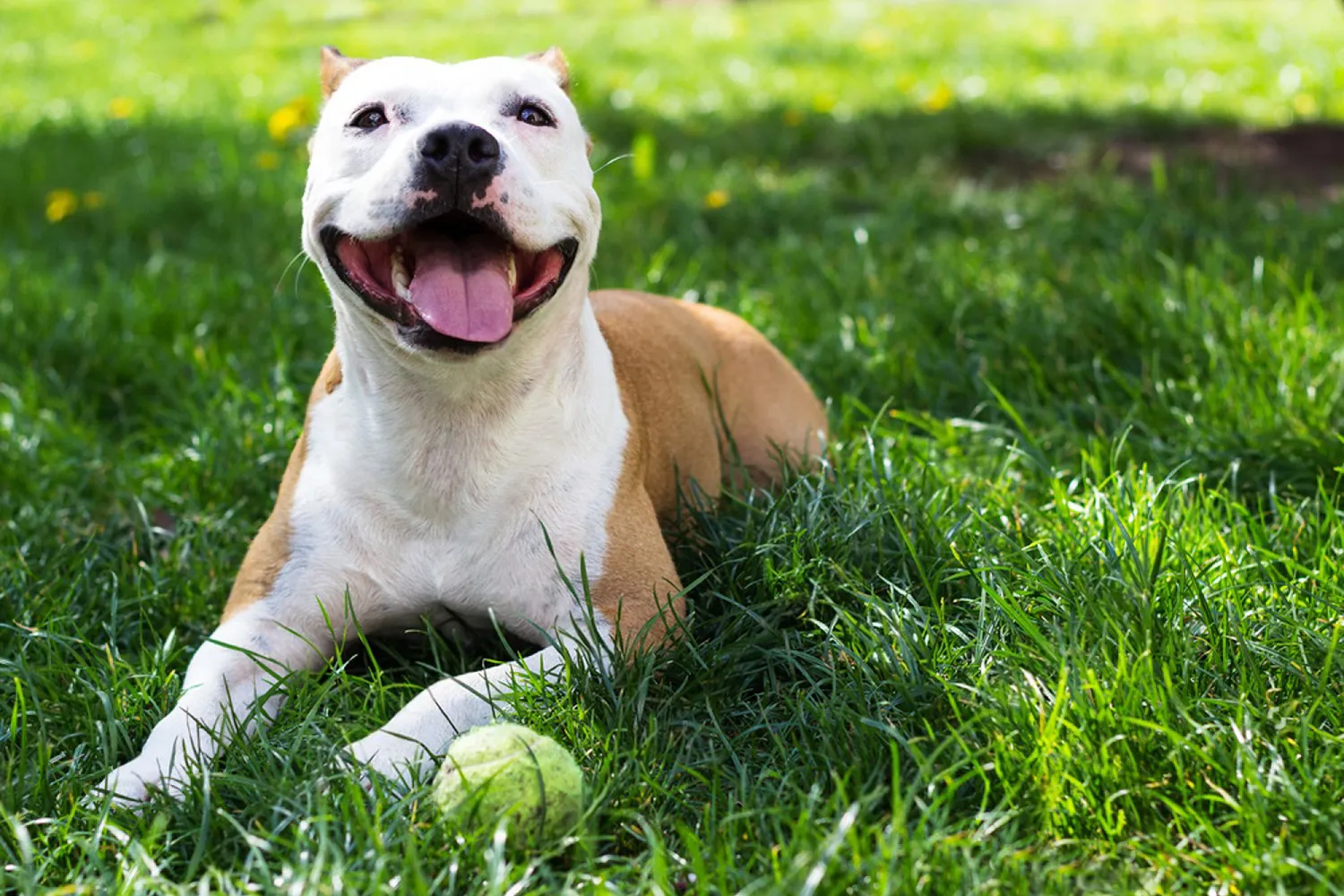
Do Staffordshire Bull Terriers have common health issues?
Staffies are sturdy little powerhouses, but like any breed, they have a few health quirks worth keeping an eye on. The good news is that most Staffies are generally healthy, and with a bit of awareness and regular vet care, you can catch things early and keep them feeling great.
Joint issues pop up most often. Hip dysplasia and elbow dysplasia are both developmental problems where the joints don’t fit quite right, which can lead to pain and arthritis over time. Patellar luxation is another one to know basically a wobbly kneecap that slips out of place, sometimes making a dog do that quick “skip” step. I remember my friend’s Staffie starting to bunny hop on longer walks; keeping him slim, switching to more low impact exercise, and using ramps instead of stairs made a big difference while the vet monitored his joints. Tips that help across the board: maintain a lean weight, build muscle with steady, moderate activity, avoid excessive jumping on hard surfaces, and ask your vet about screening X rays and joint support supplements if they recommend them.
Skin allergies are also common in Staffies and can look like nonstop itching, paw licking, red bellies, hair loss, or sore spots. Triggers can be anything from pollen to food to flea bites. What’s helped in my house: regular baths with a gentle, vet approved shampoo, wiping paws after walks, sticking to a consistent diet (an elimination trial once solved months of scratching), and washing bedding weekly. One time I changed laundry detergent and my dog’s belly rash vanished in a week sometimes it really is the small stuff.
Cataracts are another condition to watch for. They’re hereditary in some lines and can show up early, causing that cloudy look in the eyes and, later, trouble seeing. If you notice squinting, bumping into furniture, or hesitation in low light, get an eye exam on the books. A friend’s older Staffie had cataract surgery and came home trotting around like a puppy again when it’s an option, it can be life changing.
Regular vet check ups are your best safety net. Ask breeders about health testing, keep notes on any limps or itch flare ups, and don’t wait on changes in mobility or behavior Staffies can be stoic, so subtle signs matter. With a little proactive care and a lot of love, these cheerful toughies usually stay happy, active, and glued to your side for many years.
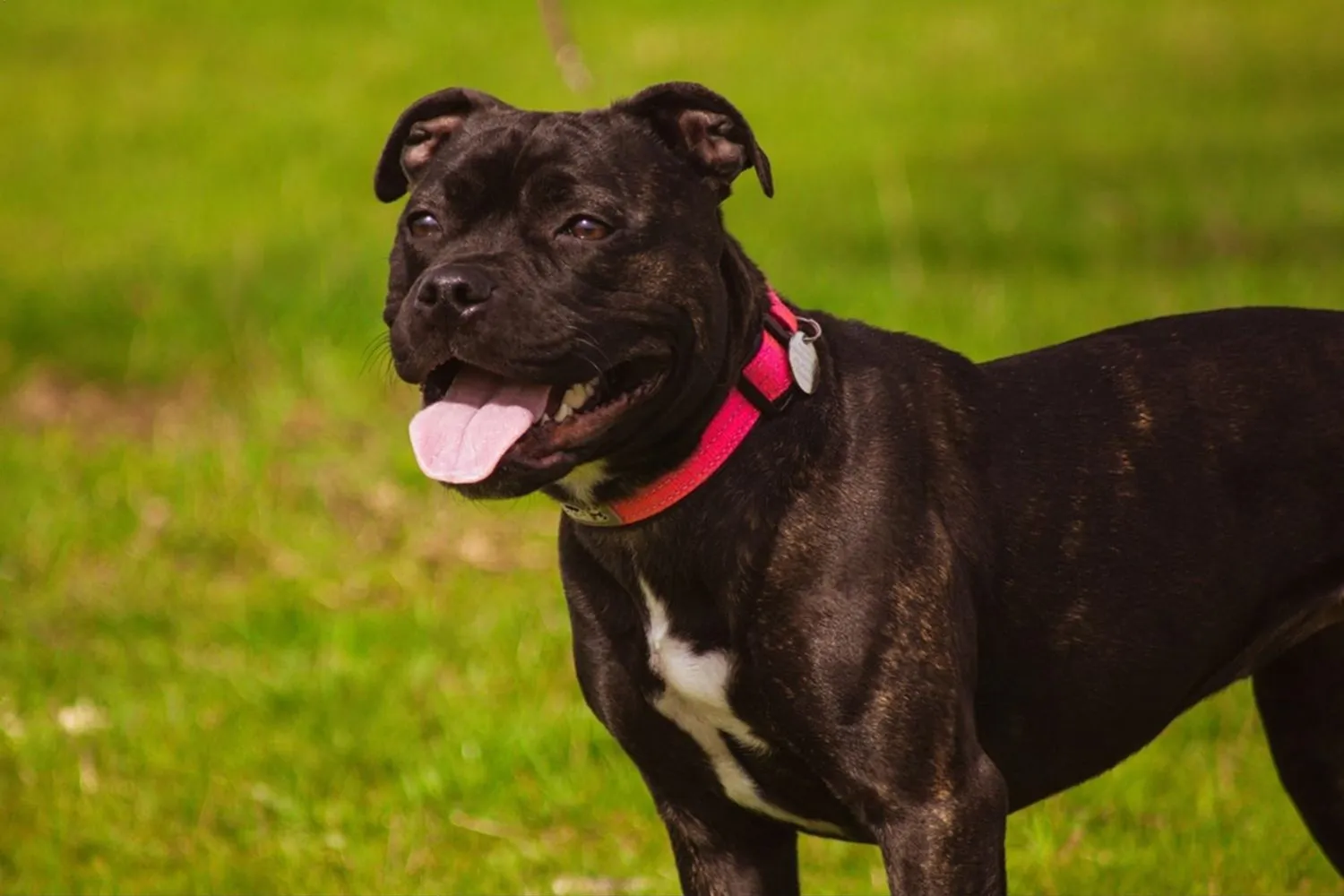
What is the lifespan of a Staffordshire Bull Terrier?
Most Staffies pack a lot of love into their years, and on average you can expect a Staffordshire Bull Terrier to live around 12-14 years. They’re sturdy little powerhouses with big hearts, and with good care, many happily nudge past those numbers. My neighbor’s boy, Bruno, just celebrated his 15th with a frosty peanut butter pup cup and a very triumphant nap.
If you’re hoping to keep your Staffie thriving into the teens, think consistency. A balanced diet (watch that waistline they can be foodies), daily exercise that mixes brisk walks with a good game of tug, and mental work like puzzle toys or short training sessions go a long way. Mine lights up when I scatter a handful of kibble in the grass for a “sniffari” ten minutes of nose work, and he’s pleasantly tired. Regular vet checkups are your secret weapon, especially as they hit their senior stride around eight or nine. We caught my girl’s early dental issues that way; a quick cleaning made her act like a puppy again.
As they age, you might notice a graying muzzle, a little stiffness after zoomies, or longer naps in sunny spots. A comfy bed, non slip rugs, and a vet approved joint supplement helped my old lad move easier. Staffies are tough but sensitive souls, so keep their hearts full gentle social time, positive training, and plenty of cuddle breaks. Do those things, and you’ll likely enjoy many joyful, goofy, snoring years together.
How Much Should You Feed a Staffordshire Bull Terrier?
Staffies are sturdy little athletes with big appetites, so feeding them is all about balance. The best place to start is with your trusted veterinarian or a canine nutritionist. They can help you choose a diet that fits your dog’s age, health, and activity level. When you’re scanning the pet food aisle, look for WSAVA guidance and the AAFCO statement that the food is complete and balanced. That’s your shortcut to knowing the basics are covered. I once considered a trendy raw plan for my own Staffie, but my vet walked me through the infection risks and the concerns about grain free diets and heart disease. I stuck with a well researched, complete diet and never looked back.
After puppyhood, most Staffordshire Bull Terriers do well on two measured meals a day. I say “measured” because eyeballing scoops is how my dog went from fit to “marshmallow with muscles” one winter. Use the feeding guide on the bag as a starting point, then adjust with your vet based on body condition. You should be able to feel ribs without digging and see a gentle waist from above. Staffies are enthusiastic eaters and quick to scarf, so a slow feeder bowl or puzzle feeder can help them take their time and feel more satisfied.
Treats are great for training, just keep them in moderation aim for no more than about 10% of the day’s calories. I often swap a portion of my dog’s kibble for training sessions so I’m not adding extra. Choose small, high-quality treats, and skip table scraps altogether. Besides being unhealthy for dogs, table food tends to create that persistent “I’m watching you chew” stare at dinner. A friend learned this the hard way, and now her Staffie sets up camp under the dining chair every night. If you want variety, use dog safe options like a few bites of plain cooked lean meat or crunchy veggies, not leftovers.
Fresh water should always be available. My Staffie gulps a good drink after play sessions, so I keep a bowl in the kitchen and another by the back door, and I bring a collapsible bowl on walks when it’s warm. In the end, every Staffie is a little different. Check in with your vet, watch your dog’s body condition, and tweak portions as seasons and activity levels change. That steady, thoughtful approach keeps them trim, happy, and ready for the next zoomie.
Staffordshire Bull Terrier FAQs
Is a Staffordshire Bull Terrier the same as a Pitbull?
“Pit bull” isn’t a single breed, but a catch all term people use for several bull type terriers, like the American Pit Bull Terrier and the American Staffordshire Terrier. The Staffordshire Bull Terrier (often called a Staffy) is its own distinct breed. They’re all cousins in the bull type terrier family, which is why you’ll notice those big smiles and blocky heads. Labels can get confusing, and in some places there are laws about “pit bull type” dogs, so it’s worth checking your local rules. I always tell folks: meet the individual dog, not the stereotype.
Can Staffies be left alone in the house?
With the right training, yes but don’t rush it. Staffies are famously people focused, so they can struggle if you suddenly disappear for hours. Start with short practice departures, use a crate or a cozy pen as a safe den, and leave a tough chew or a food stuffed toy to keep that busy brain occupied. I learned the hard way that a bored young Staffy can “redecorate” a living room in minutes; a frozen Kong and a brisk walk beforehand saved my couch. Build up gradually and consider a midday dog walker if you’ll be gone long.
Are Staffies good for first time owners?
They can be, but they’re not a hands off breed. Staffies are strong, smart, and eager to be with their people great traits if you enjoy training and structure. Consistent, positive reinforcement training and early socialization are musts. My friend adopted a Staffy as her first dog and thrived by joining a weekly class, practicing calm greetings (no flying hip checks!), and giving plenty of exercise and brain games. If you’re brand-new to dogs and prefer a low effort companion, a Staffy might be a lot at first; with commitment and guidance, though, they’re incredibly rewarding.
Are Staffordshire Bull Terriers hypoallergenic?
No. Staffies aren’t hypoallergenic and they do shed. Allergies vary by person and are usually triggered by dander and saliva, not just hair. Regular brushing, occasional baths, vacuuming, and washing bedding help. If allergies are a concern, spend time with a Staffy before committing, and talk to your doctor about management strategies.
Do Staffordshire Bull Terriers like to swim?
Some do, some don’t just like people. Introduce water slowly and keep sessions short at first. A canine life jacket is a great idea because their muscular build means they can tire quickly. I coaxed a hesitant Staffy into loving the lake by wading in with him and tossing a ball just a few feet out. Avoid strong currents, rinse after swims, and dry those ears. And never toss any dog into water confidence is built, not forced.
Disclaimer:
This article is for informational purposes only and doesn’t replace professional veterinary or training advice. Always consult a certified vet or dog trainer for guidance specific to your pup.
